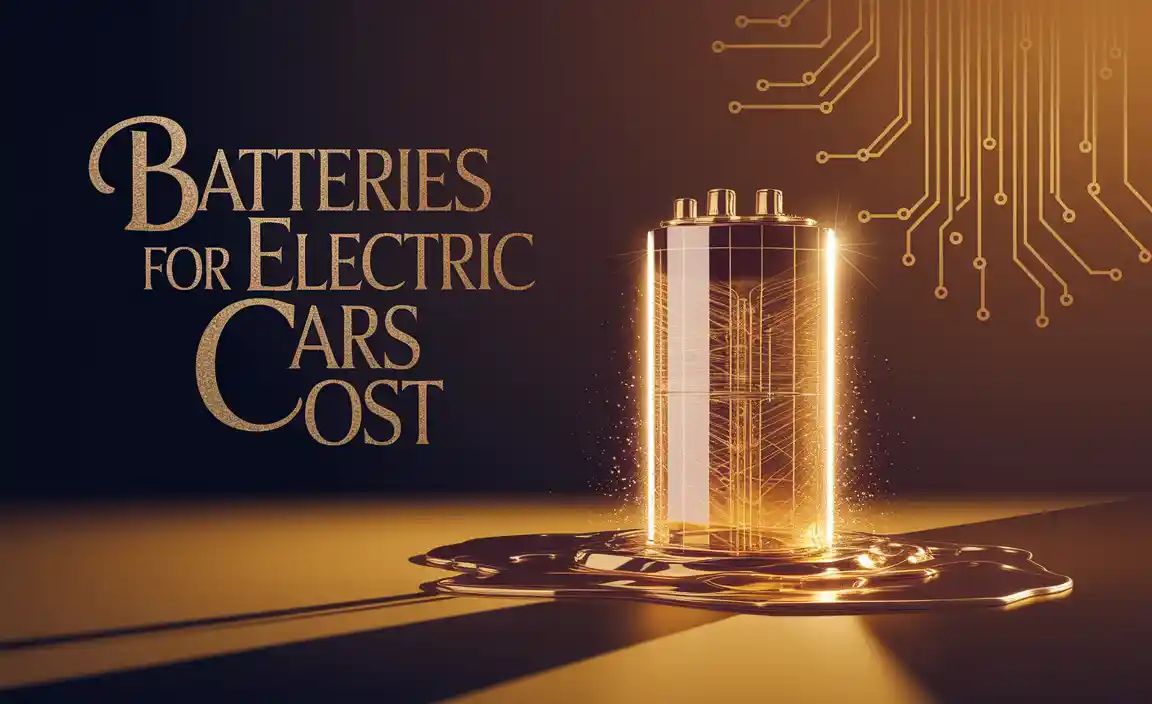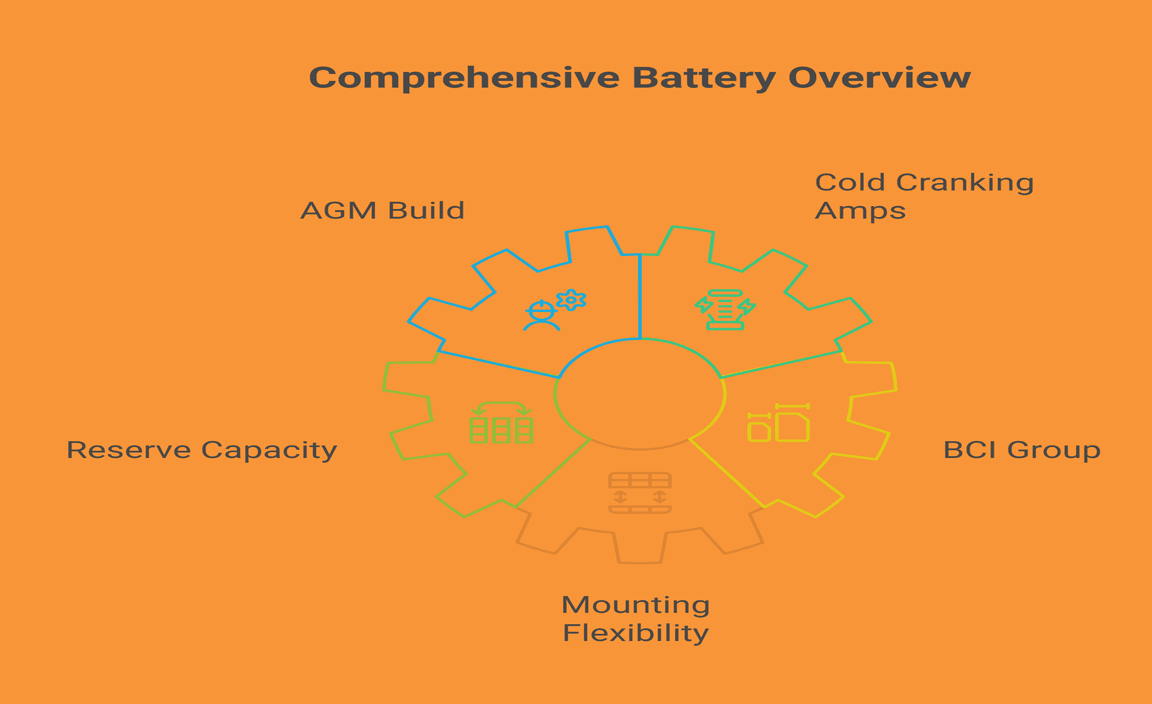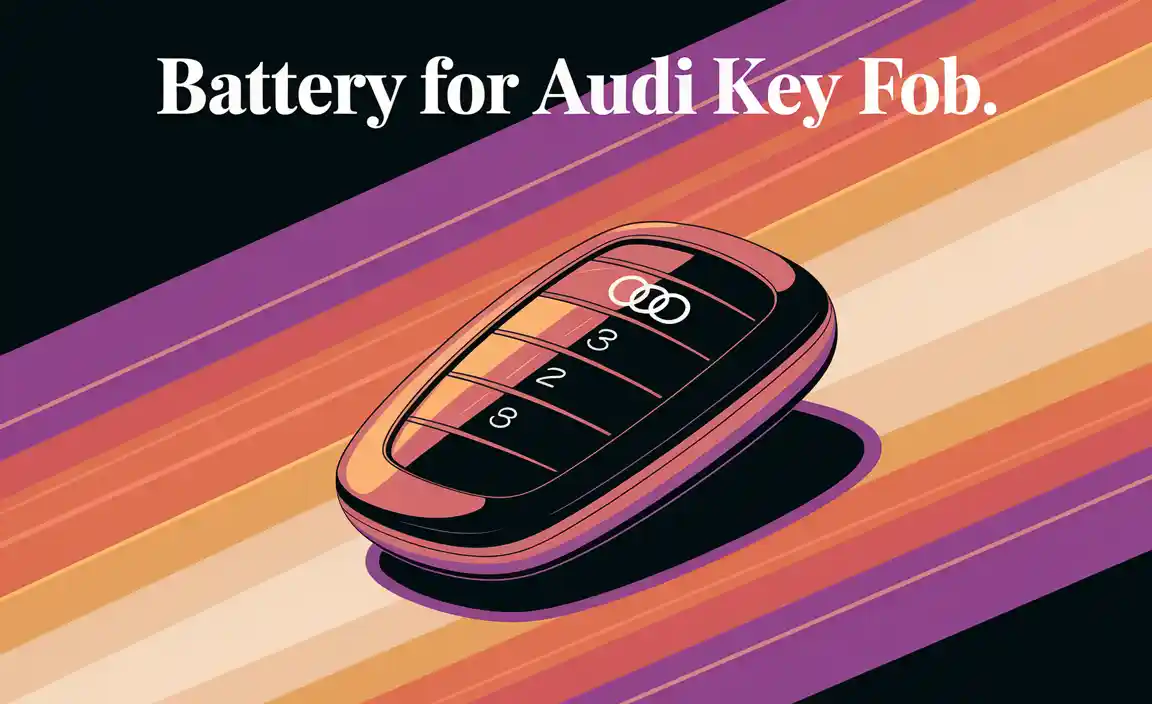Have you ever been stuck with a dead car battery? It’s a frustrating feeling, isn’t it? Knowing the best way to charge a car battery can save you from unwanted delays and stress.
Many people think charging a battery is complicated. But it doesn’t have to be! With a few simple tips, you can learn how to do it right. Did you know that the wrong method might even damage your battery? That’s why finding the best way to charge a car battery is so important.
Imagine it’s a chilly morning. You hop in your car, ready to hit the road, but your engine won’t start. What do you do next? Knowing how to charge your car battery could turn your day around. This article will guide you through easy steps and helpful tricks. So, let’s jump in and charge up your battery the right way!
The Best Way To Charge A Car Battery Efficiently
Best Way to Charge a Car Battery
Charging a car battery can seem tricky, but it doesn’t have to be. The best way involves using a reliable charger, ensuring connections are clean, and following the correct order when connecting cables. Did you know you can charge a battery while it’s still in your vehicle? This method is safe when done right. Always check the charger settings and monitor the process. A well-maintained battery can last much longer, saving you time and money!Understanding Car Battery Basics
Types of car batteries and their characteristics. Importance of battery maintenance for longevity.Car batteries come in different types, each with unique traits. The main types are lead-acid and lithium-ion. Lead-acid batteries are heavy but cost-effective. Lithium-ion batteries are lighter and last longer. Maintaining your battery is key for it to work well. Regular checks can prevent problems and ensure it lasts. This helps you save money and enjoy peace of mind.
- Check battery connections often.
- Keep it clean and free of corrosion.
- Test the battery regularly.
What are the common types of car batteries?
The common types of car batteries are lead-acid and lithium-ion.
Why is battery maintenance important?
Battery maintenance helps extend the battery’s life and improves performance.
When to Charge Your Car Battery
Signs that indicate a battery needs charging. Recommended charging frequency for different driving habits.Your car battery needs charging when you notice certain signs. If your car struggles to start or if the lights seem dim, it’s time to charge. It’s also good to check after short trips. If you drive less than 20 minutes each time, the battery may not fully charge. Aim to charge your battery every month if you don’t drive often. This helps keep it healthy.
How can I tell when to charge my battery?
Common signs include:
- Car struggles to start
- Dim headlights
- Battery warning light is on
Check your battery once a month if you drive short distances.
Choosing the Right Charger
Explanation of different types of battery chargers: trickle, smart, and solar. Factors to consider when selecting a charger.Finding a charger can feel like searching for the last cookie in the jar. You have options! Let’s break them down. First, there’s the trickle charger. It’s slow but steady, like a tortoise winning a race. Then we have the smart charger, which knows when to stop—like that friend who actually listens to your advice. Lastly, check out the solar charger. It’s like the superhero of chargers, using the sun’s power to juice up your battery!
| Charger Type | Speed | Best For |
|---|---|---|
| Trickle Charger | Slow | Maintaining battery health |
| Smart Charger | Moderate | Quick charging without overloading |
| Solar Charger | Variable | Eco-friendly charging on sunny days |
Consider factors like battery size and how often you use your car. The right charger makes a big difference, like choosing between pizza and broccoli. Who wouldn’t want pizza?
Step-by-Step Guide to Charging a Car Battery
Safe practices for disconnecting and connecting battery cables. Detailed procedure for using a battery charger.Charging a car battery? Easy peasy! First, ensure safety by disconnecting the cables. Start with the negative (-) cable, then the positive (+) cable. Remember, no spark shows you’re doing it right! Next, grab your battery charger. Set it to the right voltage and connect the positive (+) clamp first, followed by the negative (-) clamp. Here’s a handy table to help:
| Step | Action |
|---|---|
| 1 | Disconnect the negative cable |
| 2 | Disconnect the positive cable |
| 3 | Connect the charger to the battery |
| 4 | Plug in the battery charger |
| 5 | Wait until the battery is fully charged |
Finally, remove the charger starting with the negative cable first. You’re all set! Remember, charging a battery is like making a sandwich—you need to add the right ingredients in the right order!
Alternative Methods for Charging a Car Battery
Jumpstarting from another vehicle: pros and cons. Using portable jump starters effectively.Jumpstarting a car battery from another vehicle can be handy, but it has its ups and downs. On the plus side, you get a quick boost without needing fancy gadgets. But, using jumper cables can be risky if not done right—like a bad magic trick, it can lead to sparks flying! On the other hand, portable jump starters are like superheroes in your trunk. They’re easy to use and don’t require another car. Just connect them, press a button, and voila! Battery charged! Remember, having one makes you the coolest kid on the block.
| Method | Pros | Cons |
|---|---|---|
| Jumpstart from another vehicle | Quick boost, great for emergencies | Risk of mistakes, potential for sparks |
| Portable jump starter | Easy to use, no other car needed | Can be pricey, needs charging |
Safety Tips for Charging a Car Battery
Protective gear and equipment needed. Common hazards to avoid during the charging process.Always wear protective gear before charging a car battery. This includes safety goggles, gloves, and masks to shield yourself. Watch out for common hazards. Avoid sparks and flames near the battery. Never charge a battery in a closed space. This helps prevent harmful gas buildup. Remember these safety tips:
- Use safety goggles to protect your eyes.
- Wear gloves to avoid skin contact.
- Keep a fire extinguisher nearby.
Being safe can save you from accidents. Stay protected while charging!
What are the dangers of charging a car battery?
The dangers include acid spills, explosions, and gas inhalation.
Maintaining Your Car Battery After Charging
Best practices for battery care postcharging. Tips for maximizing battery life and performance.After charging your car battery, it’s essential to maintain it well. Good care helps your battery last longer. Here are some tips to follow:
- Check battery terminals. Keep them clean and tight.
- Inspect the battery for cracks or leaks.
- Avoid short trips. Longer drives help recharge the battery better.
- Use a battery maintainer if you won’t drive for a while.
These practices can boost battery life and performance. Remember, a well-cared battery helps keep your car running strong!
How often should I check my car battery?
Check your battery at least twice a year. Regular checks can help spot problems early and keep your car starting smoothly.
Common Charging Mistakes to Avoid
Outline of frequent errors and how to prevent them. Impact of improper charging on battery health.Charging a car battery isn’t as easy as plugging in a toaster. Many people make common mistakes that can hurt their battery. For example, leaving it on too long can boil the battery like a pot of water! It’s crucial to know how long to charge your battery. Also, be careful with the connections. Bad connections can lead to more sparks than a Fourth of July celebration. So, check your tools and keep those clamps tight!
| Mistake | How to Avoid |
|---|---|
| Overcharging | Set a timer or use a smart charger. |
| Weak Connections | Ensure clamps are secure. |
| Ignoring Battery Age | Replace old batteries to avoid issues. |
Improper charging can wear down a battery faster than a cheetah on a treadmill. If you want your battery to last, remember to charge it correctly. It’s like giving your battery a spa day instead of a surprise rollercoaster ride!
FAQs About Charging Car Batteries
Answers to common questions and misconceptions. Links to additional resources for further reading.Many people have questions about charging car batteries. For instance, can you overcharge a battery? The answer is yes, so watch those charger settings! How long does it usually take? Typically, it takes about 4 to 12 hours, depending on the charger and battery size. Confused by all the info? You’re not alone. It’s like picking the best pizza flavor—everyone has a favorite! For deeper insights, check out the helpful links below.
| Common Questions | Answers |
|---|---|
| Can I jump-start a dead battery? | Yes, but follow the right steps to avoid a shocking surprise! |
| Do I need to remove the battery to charge? | Nope! You can charge it while it’s in the car, but with safety in mind. |
Conclusion
In summary, the best way to charge a car battery is using a quality charger, following the guidelines carefully. Always connect positive to positive and negative to negative. Check the battery’s condition regularly. If you want to learn more, look for reliable resources or ask a trusted adult. Happy charging, and stay safe on the road!FAQs
What Are The Most Effective Methods For Charging A Car Battery Quickly?To charge a car battery quickly, you can use a jump starter or a car charger. A jump starter is a special device you keep in your car. It gives your battery a quick boost. If you use a car charger, make sure it has a fast charging feature. Always follow safety tips when charging to avoid accidents.
How Can I Determine If My Car Battery Needs Charging Or Replacement?To check if your car battery needs charging, look for some signs. If your car struggles to start or the lights are dim, it might need a charge. You can also use a voltmeter to measure the battery’s power. If it shows less than 12.4 volts, it could need charging. If it still has problems after charging, you may need a new battery.
What Precautions Should I Take When Charging A Car Battery At Home?When charging a car battery at home, make sure you’re in a well-ventilated area. This helps avoid dangerous gases. Always wear safety glasses and gloves to protect yourself. Don’t use a damaged charger or cords, as they can be dangerous. Finally, keep flammable items away from the charging area.
Are There Any Differences Between Charging A Lead-Acid Battery And A Lithium-Ion Battery?Yes, there are differences between charging lead-acid batteries and lithium-ion batteries. When you charge a lead-acid battery, you need to do it slowly and carefully. If you charge a lithium-ion battery, you can do it faster. Also, lead-acid batteries can be harmed if you overcharge them, but lithium-ion batteries are more protected. Overall, they have different ways to charge safely.
How Long Does It Typically Take To Fully Charge A Car Battery Using A Standard Charger?It usually takes 4 to 12 hours to fully charge a car battery using a standard charger. The time depends on how empty the battery is and the charger you use. If your battery is almost dead, it might take longer. Always check your charger’s instructions for the best time.





